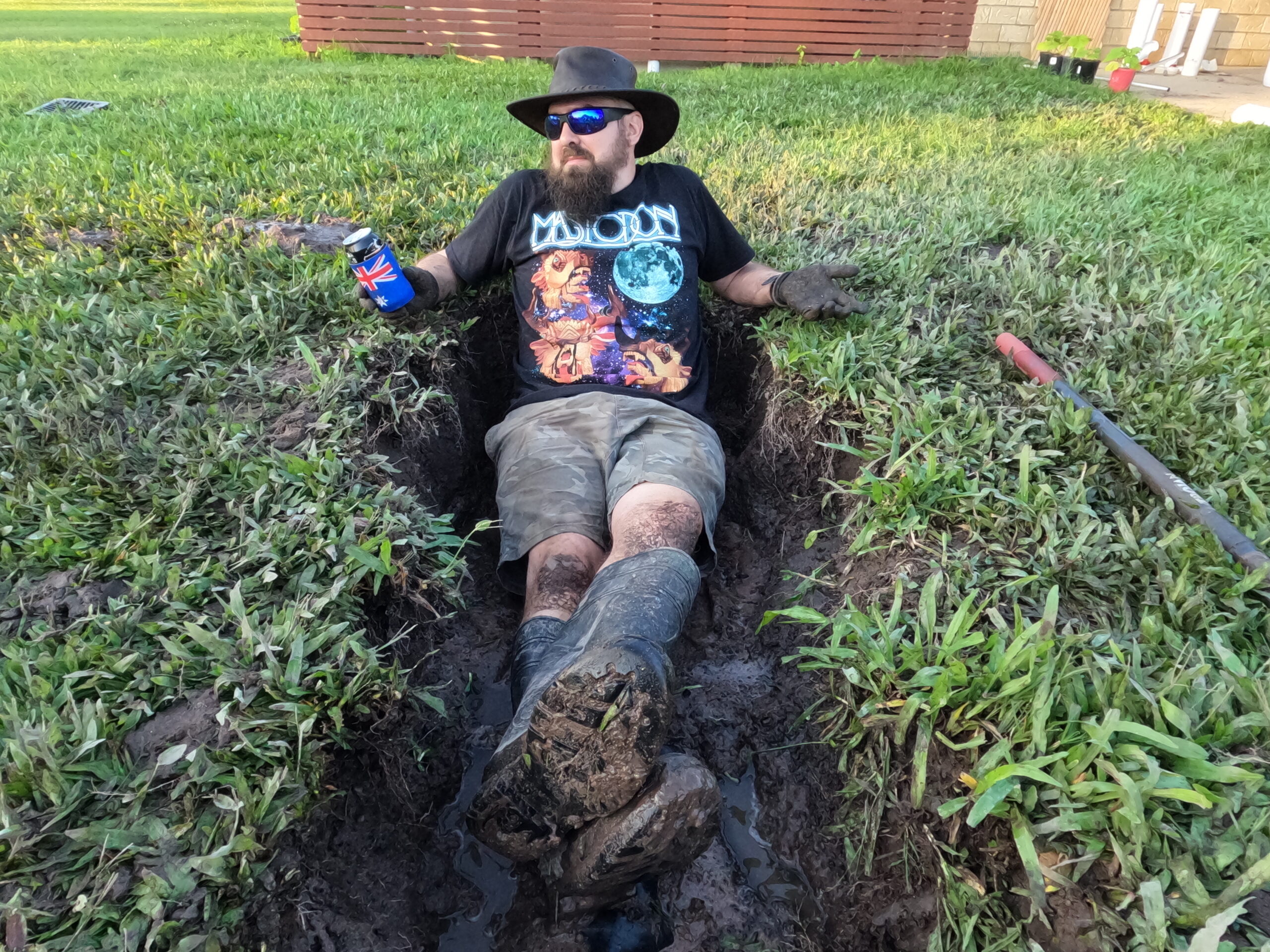It’s been raining non-stop for six days! Now, you might be thinking, “Well, your tanks must be full and your garden must be thriving—what’s the big deal?” And you’d be right about the full tanks and the well-watered garden, but our situation is far from fun or joyful.
The Drainage Problem We Didn’t Prioritize
When we first bought our property, we knew there were drainage issues, but we naively thought it would be a quick fix—just call someone to have a look. Since it hadn’t rained much when we moved in, fixing the drainage slipped lower on our priority list. Rookie mistake!
In October 2022, we got our first heavy rainstorm, and suddenly, the drainage problems became impossible to ignore. You can watch how it all went down on our YouTube channel:
Fast-forward a few weeks, and we experienced the biggest rainstorm yet—200 millimetres of rain in less than 24 hours. It was the most stressful time we’ve had as first-time homeowners. The roar of the rain on our corrugated roof made the whole experience feel even more overwhelming.
We couldn’t help but feel guilty knowing that other parts of the country were dealing with catastrophic floods, but this was our battle. It was overwhelming and left us feeling completely out of our depth.
Digging for Answers
Once the storms cleared, we knew it was time to get to work. Armed with spades and determination, we started digging around the yard to figure out what was going on. Early on, we discovered a mysterious, overgrown drain—and then two more!
One of these drains turned out to be the overflow for our water tanks, but the other two were far more complicated. As we dug deeper, we uncovered something strange: two large pieces of corrugated plastic buried beneath the soil.
The DIY Drainage Debacle
After doing some Googling, we found out that this plastic setup was someone’s half-hearted attempt to fix the drainage issue. The idea was that the corrugated plastic would collect water and slowly release it. But this system doesn’t work in clay soil, which explains why it had buckled under the pressure of our compacted clay and loamy soil.
The drainage hole was filled with thick, sticky mud—not exactly the solution we were hoping for near the foundation of our house!
Sven ended up buying a pump to remove the water, as the hole kept refilling with every rain. Digging out the plastic was a huge effort, and we learned this lesson the hard way.

The Search for Professional Help
Despite our best DIY efforts, we quickly realized we needed professional help. In December, we decided to get an expert’s opinion—easier said than done!
Attempt 1: We called a landscaper specializing in drainage, but he never showed up.
Attempt 2: Our septic tank guy claimed to handle drainage issues, so we gave him a call. He didn’t show up either.
Attempt 3: Finally, we found a reputable expert in late December. He came to assess the situation, and we felt hopeful. But as of January, we’re still waiting for his quote.
It’s been a frustrating process, to say the least. As newcomers to this town, state, and problem, finding reliable help has been a real challenge.
Watch: See the full story of our drainage drama on YouTube:
6 Days of Rain and Counting
And now, here we are—six days into non-stop rain, still no closer to resolving the drainage issue. Our water tanks are full (a small silver lining), but the grass is overgrown, and the rain has made it impossible to mow.
Living in a tropical climate has its joys and challenges, and while dealing with drainage issues hasn’t been easy, I wouldn’t trade our slice of paradise for city living.
Lessons Learned
If there’s one thing this whole experience has taught us, it’s that it’s better to prioritize issues before they escalate into bigger problems. If you’re a fellow first-time homeowner or property owner, here are a few lessons we’ve learned the hard way:
- Listen to Early Warnings: If you notice drainage problems, tackle them sooner rather than later.
- Do Your Research: Know what systems work best for your soil type. (Spoiler alert: corrugated plastic and clay soil don’t mix!)
- Find Reliable Help Early: It’s essential to establish a network of trustworthy professionals before problems arise.
Final Thoughts
Owning a home in a tropical climate is an adventure with plenty of highs and lows. While the rain has been a challenge, it’s also a reminder of why we chose this lifestyle. There’s a certain pride in tackling these obstacles head-on, even when it feels overwhelming.
Would I move back to the city? Not a chance.
Have you faced similar drainage issues or struggled with clay soil? I’d love to hear your experiences and any tips you have. Let’s figure this out together—because as we’ve learned, there’s no one-size-fits-all solution.
Until next time, stay dry and happy homesteading!
